Small spaces can certainly feel cozy, but they can sometimes leave you wanting more. And by more, I mean more space! I am not one of those people who lives in a sprawling McMansion, and I probably won’t ever be, either. I’ve spent a good portion of my adult life living in small apartments and homes.
And even now, I wouldn’t call my house enormous or anything. I have a thing for historical architecture, and we all know that old homes aren’t known for massive floor plans (or even closets in some cases). Big spaces aren’t always better, either. Smaller spaces require a lot less. Small rooms are easier to keep clean, easier to organize, and easier to decorate. They can often feel more intimate and cozy and have a special charm about them.
At the same time, many people want their spaces to feel bigger, even when they are small. That’s because, even though small spaces are easier in a lot of ways, they can also have a few downsides, too. I’m talking about that cramped, claustrophobic, anxiety-inducing feeling of a tiny room that you’ve crammed all of your worldly possessions into!
Instead, it’s time to put a little conscious effort into your small space. You don’t actually need to buy a bigger house, just be a little more intentional with the space you have. Hopefully, you will end up with a relaxing and inviting home that feels open and airy.
Keep It Simple

Really, the easiest way to make a space feel bigger is to keep it simple. In order to create an open space out of a small room, you have to do some editing. The more furniture, knick-knacks, blankets, and other possessions you have in a room, the more cluttered it will feel.
Even if clutter is up off the floor – I’m not even talking about a mess here – too many things in general equates to visual clutter. That’s when you have several items of different sizes, types, colors, etc. that your eye can see all at the same time. It can mean a bunch of knick-knacks on tables and shelves, tons of different sizes of photos hanging on the walls, a counter full of small appliances, or too many coffee table books piled up.
You’re going to have to ditch some of the stuff in order to make your space feel larger. Visual clutter will always give the illusion that there is less space than there really is.
Related: Decluttering your space is also one way to boost your mental health!
Light and Neutral

Warm hues and dark colors can make a space feel cozy and intimate. On the opposite side of that, soft and light colors will make your space feel more open and airy. Calming colors like delicate blues and greens do a great job of making a room feel a little more spacious.
While choosing those light and neutral colors, try sticking to a monochromatic color scheme. Contrasting colors can visually break up a space, making it feel smaller. When you choose different shades of the same color or even two colors close to each other on the color wheel, it creates unity and harmony. This will help everything flow together, creating the illusion of more space.
For more about decorating with monochromatic color schemes, check this out.
Incorporate Reflective Surfaces
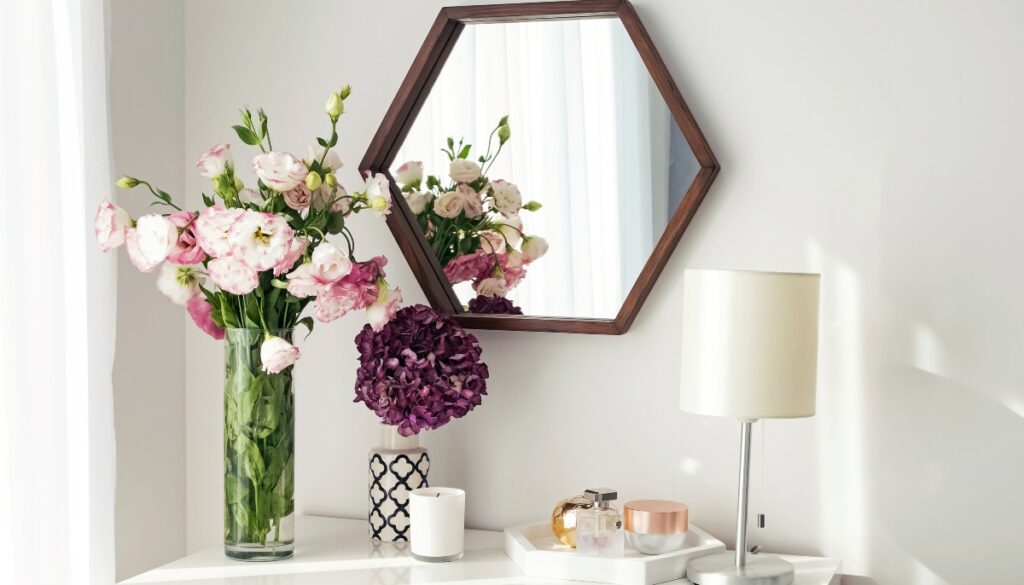
Strategically placed mirrors and other reflective surfaces can really open up a room. It reflects light, making the room feel more open. That light, airy feeling of openness is key to a room that feels larger. This can be something like a regular mirror on the wall, but you can also incorporate reflective side tables or other pieces of furniture.
Large mirrors on the walls also create the illusion that there is more space. While a mirror can’t add literal square footage to your space, it can trick the eye into perceiving more than there is. When done just right with a large enough mirror, it might even look like you have a whole other room tucked away over there!
Scale Down the Furniture
I know this seems obvious, but it is definitely worth a mention here. Simply put, a lot of big, bulky furniture is going to take up a lot of space. It will eat up too much of the usable space in the room, making it feel smaller than it already is.
Large furniture also throws everything off in a small space because it doesn’t feel in proportion with the room. If your furniture is pushed all the way up against the boundaries of the room, it’s too large. That will make the room feel cramped. Having a little air between the furniture and the walls can create a sense of roominess.
Show a Little Leg
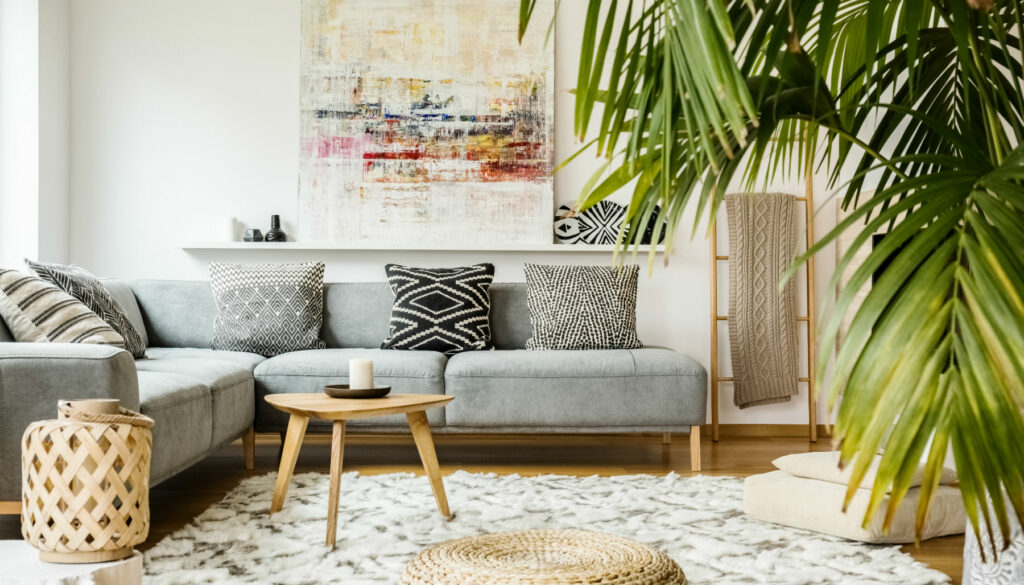
No, I’m not talking about your legs! I’m talking about the legs on your furniture. Choose furniture with exposed legs, as opposed to sofas with skirts and overstuffed, boxy chairs.
Just like leaving space between the walls and the furniture, it’s important to choose furniture that doesn’t go completely to the floor. It’s the same reason why you want to have a little air between the furniture and the walls. That extra airflow will give the space a sense of openness and roominess. The more of the floor you can see, the better.
Let In Some Light
Dark rooms can feel smaller, so let in some extra light to brighten and lighten the space. It can really do wonders for a small room. If your space doesn’t have a lot of windows, it’s still helpful to keep it well-lit with artificial light. This will still help it feel more open.
On top of giving your room a light and airy feeling, being able to see out of the windows can also give your room more depth. Similar to the way a reflection in a mirror can trick the eye into perceiving more space than is really there, a window creates the illusion of more room.
Skip Bold Upholstery
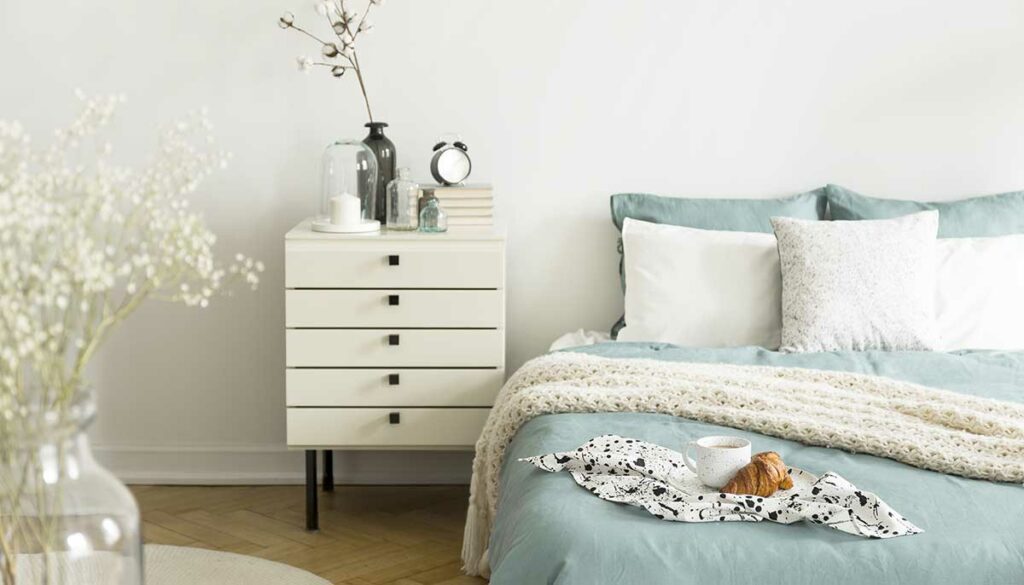
I don’t have anything against bold, intricate, and busy patterns. They can be really interesting and unique. But if you are trying to make a small room feel larger, you have to skip the bold upholstery.
When your furniture, drapes, and other large objects in the room feature busy patterns, it won’t do you any favors in opening up the space. They call attention to your eye, and that intricate pattern in a tight space can almost seem like clutter to your brain.
Instead, open up the room with solid colors, and neutral tones when possible. To add interest, opt for something in a single color with texture.
Sheer and Clear
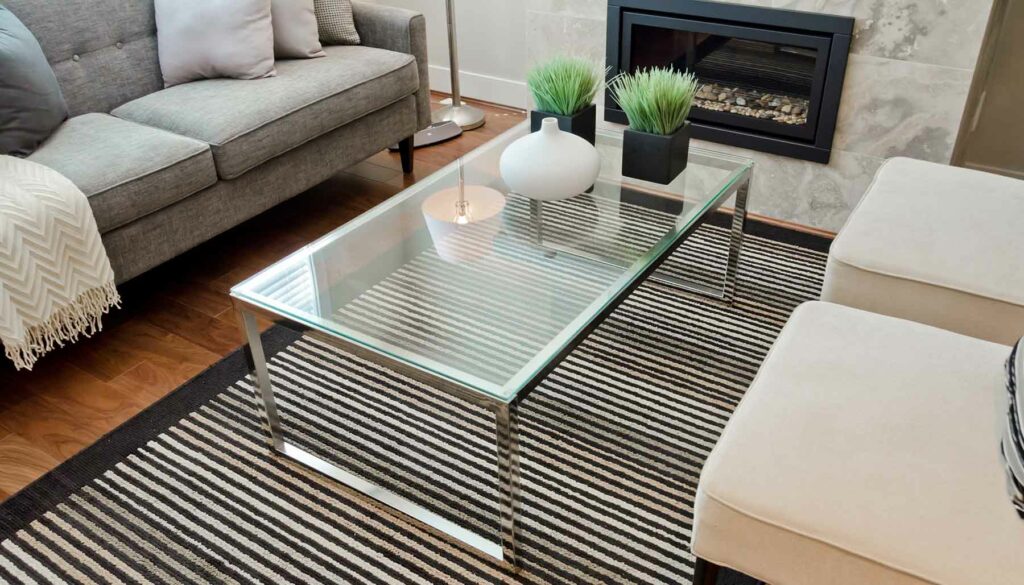
Materials that you can see through can do wonders for opening up a space. The more you can actually see, the bigger the room will feel. Think of it this way: if you replace an opaque shower curtain with a clear, frameless enclosure, it will make a small bathroom feel infinitely bigger – without actually adding any square footage.
Similarly, heavy, light-absorbing drapes will weigh your room down, while light and sheer curtains will add a sense of roominess. Take advantage of sheer fabrics, glass, and even acrylic to open up the space. These see-through materials will add function without taking up a ton of visual space.
Ditch the Drapes
Or, get rid of the window treatments altogether. This might not be doable in every situation, like if your bedroom window faces the street or a neighbor’s home. Sometimes, you still need curtains for privacy. But if you can get away without drapes, ditch them.
Not only do they block off the openness and natural light that windows bring to your space, but they also visually break up the space. To top it off, it’s really just another thing in the room. By removing curtains altogether, you’re simplifying the space and opening it up more.
If you really love (or need) curtains, you can hang them in a way that might make your room feel bigger. High-hanging curtains can create an illusion of height. Hang the curtain rod close to the ceiling, and let the curtains run the entire length to the floor. For even more effect, use curtains with long, vertical stripes.
Utilize Hidden Storage
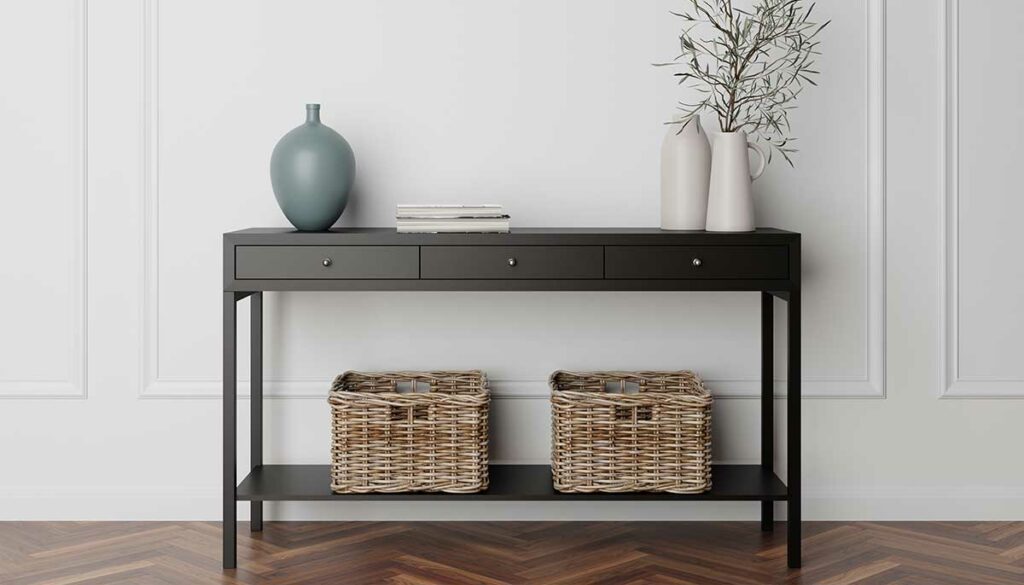
These days, there are tons of storage options out there. Keeping things stored neatly does more than just keep your house clean. It also makes your home feel more spacious. A cluttered space has a way of closing in on you! Hidden storage is key here. You don’t want to add more items than necessary, so they don’t take up additional space. You also don’t want to be able to see the items you are storing.
In my house, I have a coffee table that opens. Look for ottomans or benches with hidden storage or side tables with drawers. Even a couple of storage cubes in your bookcase is better than nothing. However, don’t add a bunch of random furniture pieces that you don’t need, just to bump up the storage. It kind of defeats the purpose, don’t you think?













